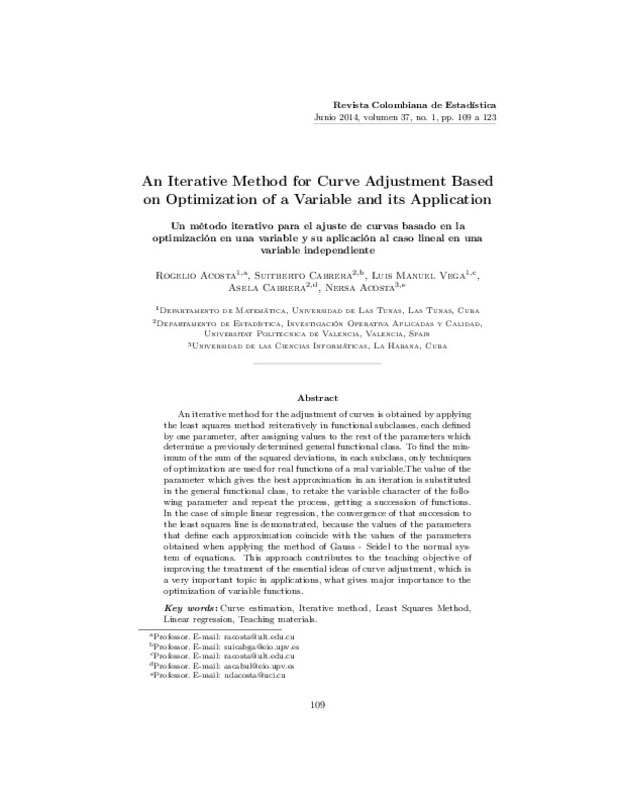JavaScript is disabled for your browser. Some features of this site may not work without it.
Buscar en RiuNet
Listar
Mi cuenta
Estadísticas
Ayuda RiuNet
Admin. UPV
An Iterative Method for Curve Adjustment Based on Optimization of a Variable and its Application
Mostrar el registro completo del ítem
Acosta, R.; Cabrera García, S.; Vega, LM.; Cabrera, A.; Acosta, N. (2014). An Iterative Method for Curve Adjustment Based on Optimization of a Variable and its Application. Revista Colombiana de Estadística. 37(1):111-125. https://doi.org/10.15446/rce.v37n1.44361
Por favor, use este identificador para citar o enlazar este ítem: http://hdl.handle.net/10251/112966
Ficheros en el ítem
Metadatos del ítem
| Título: | An Iterative Method for Curve Adjustment Based on Optimization of a Variable and its Application | |
| Otro titulo: |
|
|
| Autor: | Acosta, Rogelio Vega, Luis Manuel Cabrera, Asela Acosta, Nersa | |
| Entidad UPV: |
|
|
| Fecha difusión: |
|
|
| Resumen: |
[EN] An iterative method for the adjustment of curves is obtained by applying the least squares method reiteratively in functional subclasses, each defined by one parameter, after assigning values to the rest of the ...[+]
[ES] Se obtiene un método iterativo para el ajuste de curvas al aplicar reiteradamente el método de los mínimos cuadrados en subclases funcionales, cada una definida por un parámetro, luego de asignar valores a los restantes ...[+]
|
|
| Palabras clave: |
|
|
| Derechos de uso: | Reconocimiento - No comercial - Sin obra derivada (by-nc-nd) | |
| Fuente: |
|
|
| DOI: |
|
|
| Editorial: |
|
|
| Versión del editor: | https://doi.org/10.15446/rce.v37n1.44361 | |
| Código del Proyecto: |
|
|
| Agradecimientos: |
The authors acknowledge the financial support of AECID (Spain) under Project No A2/039476/11 - “Institutional Strengthening in the Teaching of Subjects of Statistics, Operative Investigation, Liability and Quality, and ...[+]
|
|
| Tipo: |
|









